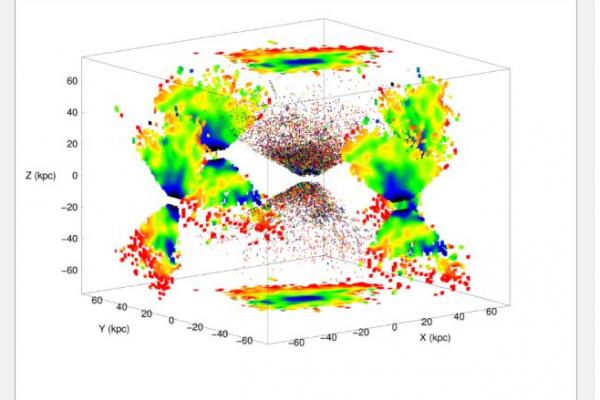
SOUTH BEND, Ind., Sept. 6 (UPI) — A new map composed by scientists at the University of Notre Dame offers a detailed view of the formation of the Milky Way galaxy some 13.5 billion years ago.
The map is based on the most recent and comprehensive galaxy formation models, which suggest the Milky Way came together as an amalgamation of miniature halos of stars and gas. As these mini-halos merged and the Milky Way grew, the oldest stars congregated in the center while younger stars situated themselves along the outskirts.
“We haven’t previously known much about the age of the most ancient component of the Milky Way, which is the Halo System,” Notre Dame astrophysicist Daniela Carollo said in a news release. “But now we have demonstrated conclusively for the first time that ancient stars are in the center of the galaxy and the younger stars are found at longer distances.”
Researchers published the new map in the journal Nature Physics.
“This is another piece of information that we can use to understand the assembly process of the galaxy, and how galaxies in general formed,” Carollo added.
The galaxy’s first stars were formed by gas clouds carrying primordial material like hydrogen and helium. Different sized halos integrated themselves into the growing galaxy in different ways.
The earliest small gas clouds merged with other clouds at the center of the galaxy after producing only a generation or two of stars. Larger clouds produced several generations of stars before becoming incorporated into the galaxy’s outer layers.
Though the new map currently can only visualize the formation of the Milky Way, researchers say the underlying models could be updated with new information from more distant galaxies to simulate the formation of the universe.



